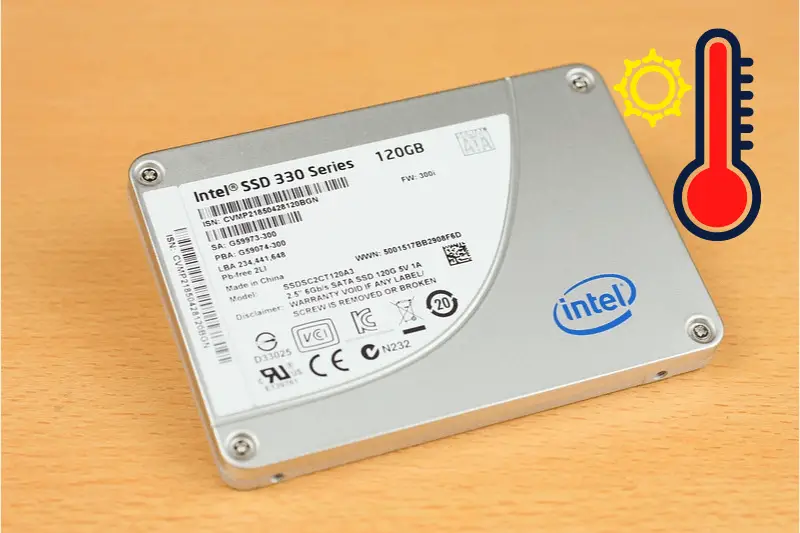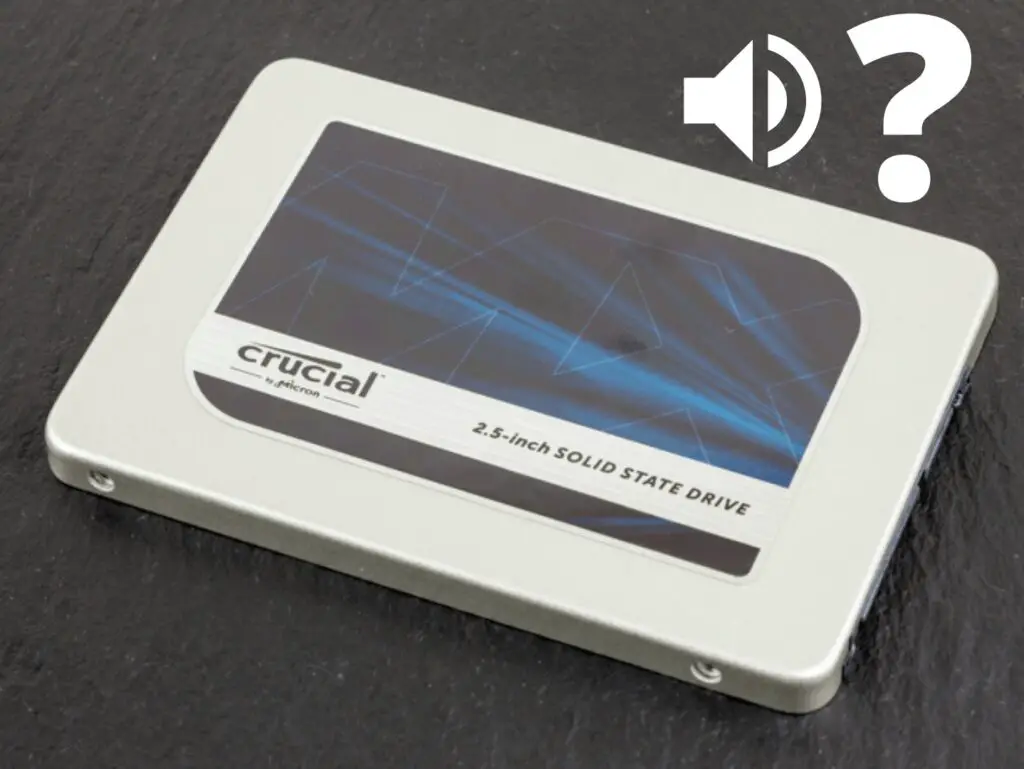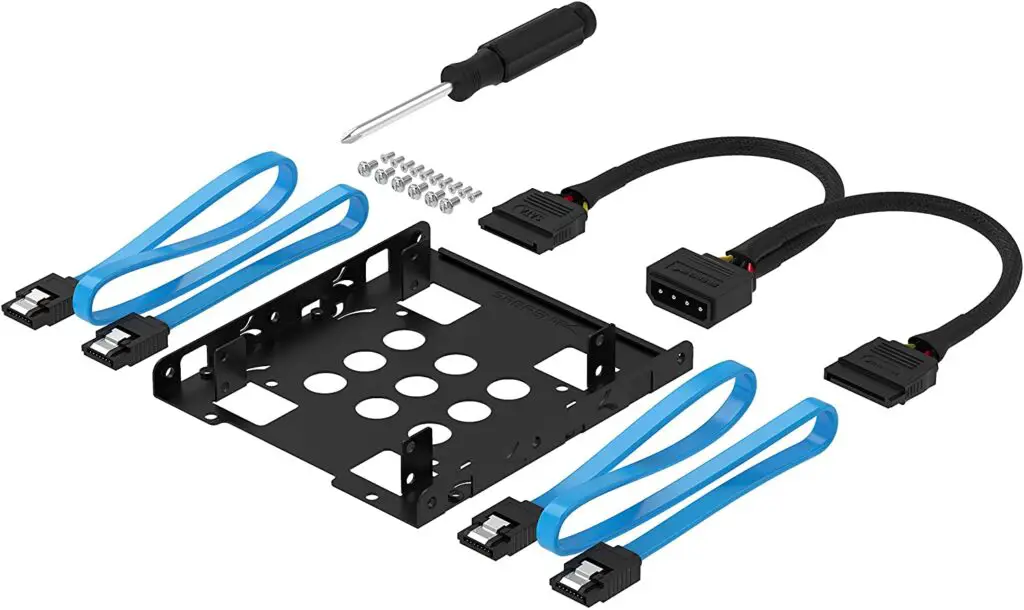SSDs have enjoyed a steady rise to become the storage option of choice. That said, they are still new to many computer users who haven’t made the switch or have only recently done so.
Here we’ll explore whether SSDs get hot, what happens if they do, the reason behind it, and if it should be a reason for concern.
Here’s the Lowdown on Whether SSDs Get Hot
SSDs are first and foremost electric components made up of several chips. As reading or writing data tasks execute, heat is generated as varying electric energy courses through the circuitry. Heat is a normal by-product of any functioning electrical part, of which SSDs are no exception.
Table of Contents

Why do SSD Get Hot?
SSDs tend to heat up a little over their usage. To understand why, two points can explain this.
The first point is that SSDs are electric components.
Electrical energy courses through the SSD thanks to the circuitry onboard. As this electric energy continues to be in use during operations, heat is generating. Heat is a normal by-product of operating electric components.
The second point to take note of is their form factor. If you consider size, SSDs don’t have much room for additional onboard parts.
In this context, consider something like a GPU. Its form factor can allow for onboard cooling fans to help in regulating its temperature during operations. SSDs don’t have large enough form factors to allow for such a thing.
So, as SSDs continue to operate normally, they produce some heat with no means of dissipating it.
Does Heat Affect SSD Performance?
Electrical components are known to produce heat when going about their usual operations. That said, they’re always manufactured and designed to work within a specified temperature range.
SSDs are no exception in this regard. They have their own optimal operating temperature range. When an SSD happens to go outside the limits of this set range, it will experience problems.
For instance, when it gets too hot, the NAND memory cells experience increased wear and tear. With the increased wear and tear, you can expect a reduction in performance.
Read and write speeds won’t be as good, and it’s even possible that data loss can occur.
With the increased wear and tear, the SSD can go out of commission quicker than it was supposed to.
Do NVMe Drives Get Hot?
NVMe SSDs are currently the fastest SSD variants available. Thanks to their connection interface standard, they can transmit data and perform operations much faster than their SATA-based counterparts.
However, the ability to transfer data faster in larger volumes demands extra power consumption in this case. All electrical parts consume electrical energy and generate a certain amount of heat as they are working.
With the demand for more power for NVMe SSDs, they inadvertently end up producing more heat. The fact that electrical parts produce heat while in standard operation coupled with the unique needs and functioning of NVMe SSDs means they can get quite hot.
Does M.2 SSD Get Hot?
M.2 refers to a specification standard for connecting specific components to the motherboard. In SSDs especially, it has proven to be quite a great application. SSDs subscribing to this standard and form factor perform far better than their SATA-based counterparts.
That said, their connection allows them to transfer data and achieve read and write speeds of up to 6GB/s. Completing these tasks at these speeds all day long generates a considerable amount of heat.
Also, considering their small form factor, it’s unviable to have an onboard cooling function applied to them. Because SSDs can’t support an independent cooling system of their own, the heat they generate doesn’t dissipate quickly.
It’s therefore imperative they are installed somewhere unobtrusive to the rest of the system and with access to sufficient airflow for cooling.
Do SSD Get Hotter than HDD?
All electrical components generate a certain amount of heat as they operate. SSDs and HDDs in this regard are no exception.
Though they both produce heat due to the above fact, the amount of heat they each generate is different. To understand why we have to look at a fundamental difference between these two storage mediums.
Firstly, HDDs comprise layers of magnetic discs where the data is stored. A magnetic head is also present to perform read and write operations. It moves through the various discs when operations are getting executed.
SSDs on the other hand, comprise flash memory cells.
Since they have a flash memory composition, SSDs have no moving parts within them like HDDs. (HDDs have rotating discs and a movable magnetic head.) The mere presence of these mechanical components in HDDs means they produce a significantly higher amount of heat compared to SSDs.
SSD vs. HDD Heat Comparison
Let’s first take a step back and acknowledge that both SSDs and HDDs are electric components. This fact means they utilize electricity to power up and function.
A common characteristic of any electric component is that it generates heat as it works. SSDs and HDDs are subject to this matter as well. This fact means they both produce heat. The difference in their architecture, however, comes into play when talking about heat.
SSDs comprise flash memory cells while HDDs utilize rotating magnetic discs for data storage. HDDs also have a movable magnetic head that performs the read and writes functions onto the discs. The fact that HDDs have movable components within it mean it produces more heat than SSDs.
Some tests have gone as far as concluding that HDDs produce up to 50% more heat than SSDs thanks to their mechanical components.
Can SSD Drives Overheat?
Electrical components all have the commonality of generating heat as they function. That said, this fact implies that as they are manufactured and shipped, they come with a temperature specification that’s ideal for their performance.
SSDs are no different in this regard. They have a recommended operating temperature range that is more or less similar across the various brands available. When an SSD operates outside the limits of its specified temperature range, issues are bound to arise.
For instance, speeds may incur a significant drop when tasks are executing. Continued operation outside recommended temperatures can also lead to increased wear and tear of SSD parts.
The heightened wear and tear, in the long run, can lead to the SSD lasting a shorter time than originally intended.
In the first place, however, it is difficult for overheating to occur unless the size and needs of your task are demanding. Altogether, however, modern SSDs are equipped with mechanisms to alleviate issues that may arise from overheating.
How Would You Know if Your SSD is Running Hot?
To continuously check on the status of the different components present on a computer, specific programs and utilities are present on the OS.
In this case, checking or finding out the temperature of an SSD can be achieved in two ways.
First off, you can opt for the internally available programs on your OS. An operating system is an interface between the computer’s hardware and software. This means it virtually has a connection to all the components.
With this fact present, the OS can then tell the condition of the parts connected to it and whether they’re performing as well as they should. To do this, an OS has a utility program embedded in it for this task. With the different OS available, the utilities may be accessed and viewed differently but would give the same information.
The other option is to install a third-party program that specifically caters to this need.
Check this real cool video on how to monitor the temperature of your SSD or HDD.
Do SSD Drives Need Cooling?
It’s worthwhile to keep in mind that all-electric components generate some amount of heat as they’re in use. SSDs are no different here.
That said, SSDs, like other electric parts, have a specified operating temperature scale since they’re known to produce heat. For continued functioning and utilization of your SSD, it must continue to operate within this set temperature range, otherwise, malfunctions can occur.
Because of this, cooling becomes an important factor for SSDs. It is for this reason why SSDs need to be placed appropriately within the computer casing. Appropriate positioning ensures the SSD has access to the airflow provided by the fan. This airflow helps dissipate the heat generated as it functions.
You can also opt to use add-ons like heat sinks which also help dissipate the heat generated by SSDs.
What is the Safe Operating Temperature of SSD?
SSDs, like other electric parts, generate some amount of heat as they are in use. That said, with the heat-generating property present, they are manufactured and designed to work well within certain temperatures.
For most SSDs currently on the market, the recommended operating temperature is within 0-70°C. For the most part, normal read and write operations drive up the temperature to around 50°C. When the task is heavier and more demanding, more energy consumption continues, and therefore more heat is generated that can go up to 70°C.
An SSD functioning outside these temperature parameters isn’t in a proper environment and can stop working as expected anytime.
Though manufacturers offer a variety of SSDs, most are made quite similarly and therefore subscribe to mostly similar operating temperature ranges.




